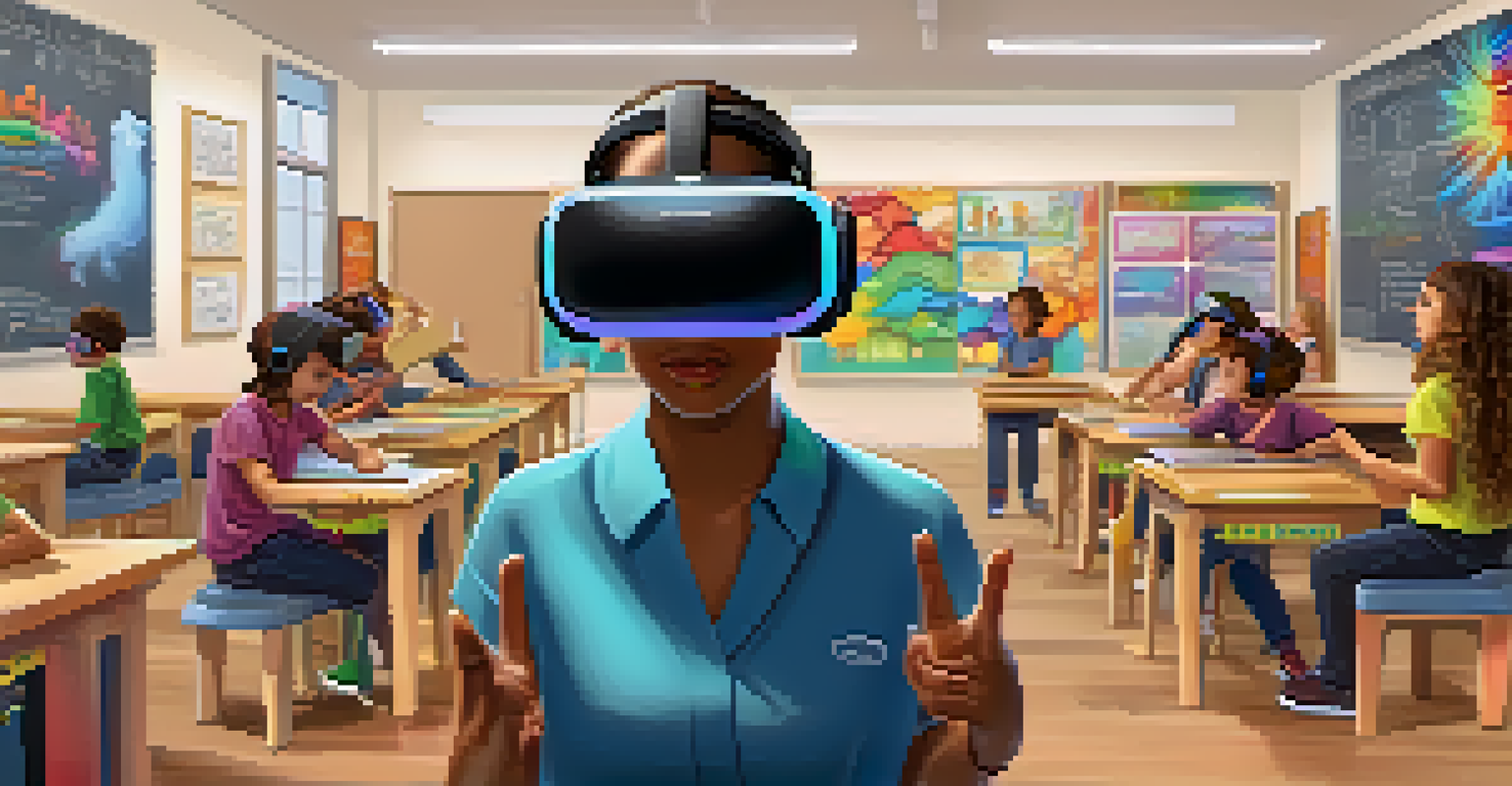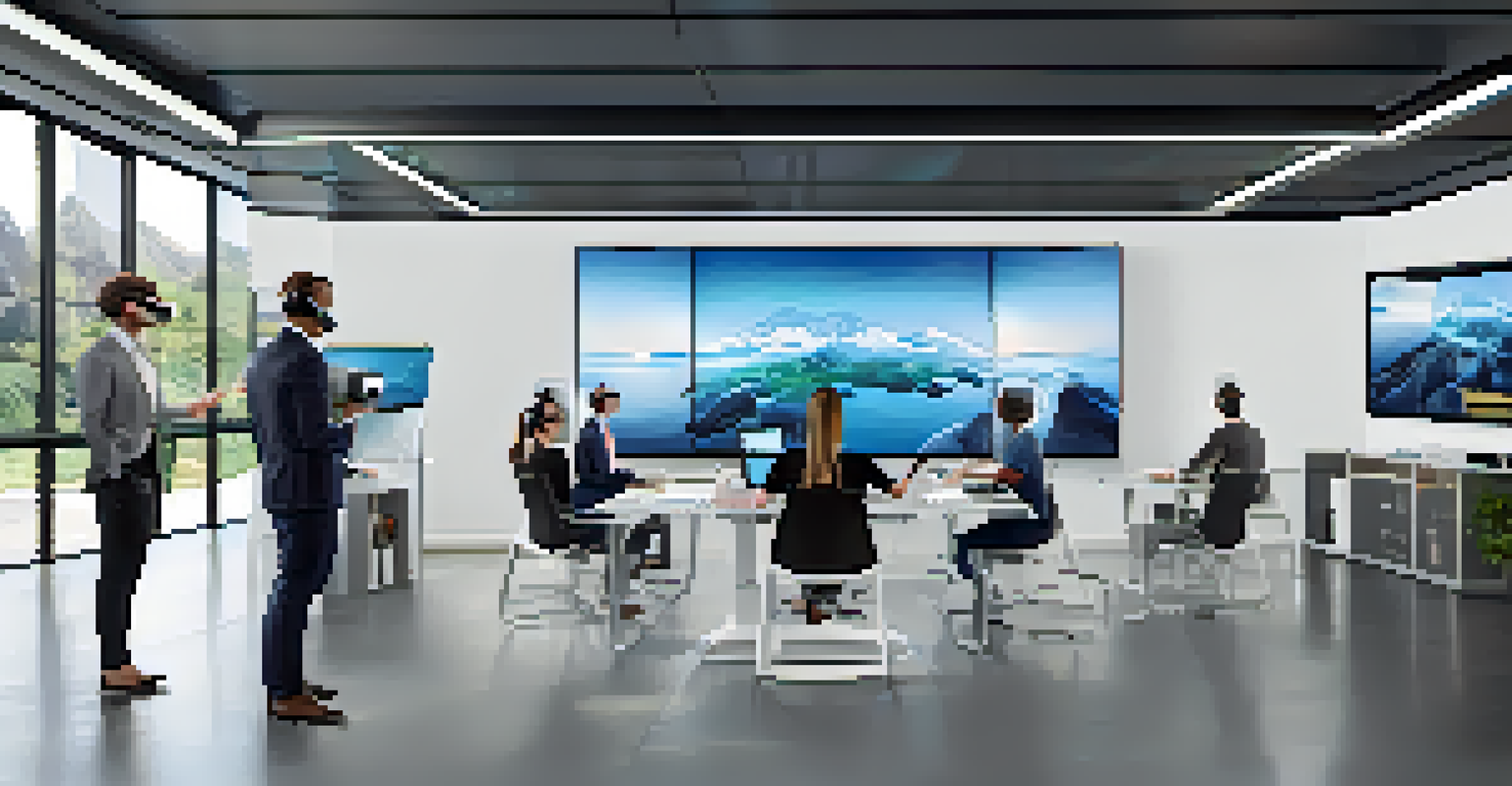Utilizing Virtual Reality as a Tool for Innovative CPD Learning

Understanding Virtual Reality in Education
Virtual reality (VR) immerses users in a 3D environment, creating interactive experiences. This technology is making waves in education, particularly in Continuous Professional Development (CPD). By providing realistic simulations, VR helps learners engage with complex concepts in a tangible way.
Virtual reality is not just a tool for entertainment; it can become a powerful educational platform that transforms the way we learn.
Imagine being able to step into a virtual operating room or a bustling classroom, where you can practice skills without the real-world consequences. This hands-on approach not only enhances learning but also boosts retention. VR allows professionals to experience scenarios they might not encounter regularly, making it a powerful tool for CPD.
As educators and trainers explore the potential of VR, they discover that it caters to various learning styles. Visual learners benefit from immersive visuals, while kinesthetic learners get to interact with the environment. This personalized approach to learning is crucial in today's diverse educational landscape.
Benefits of VR for Continuous Professional Development
The benefits of incorporating VR into CPD are numerous and compelling. First and foremost, VR offers a safe space for professionals to practice their skills. For example, medical practitioners can simulate surgeries, allowing them to refine their techniques without risking patient safety.

Moreover, VR can significantly reduce training costs and time. Traditional training often involves travel and extensive materials, but with VR, all you need is a headset. This not only saves resources but also allows for more flexible learning schedules, making it easier for busy professionals to engage with CPD.
VR Enhances Learning Engagement
Virtual reality immerses learners in realistic environments, making complex concepts more tangible and engaging.
Finally, VR can enhance collaboration among peers. Virtual environments can host multiple users, promoting teamwork and communication. This social aspect of learning is vital, as many professions rely on collaborative efforts to succeed.
Real-World Applications of VR in CPD
Several industries are already harnessing the power of VR for CPD. For instance, in healthcare, institutions are using VR to train surgeons in advanced techniques. These simulations help build confidence and competence before they operate on real patients, leading to better outcomes.
The future of education is in immersive experiences that allow us to learn in ways we never thought possible.
In the field of education, teachers can use VR to create immersive lessons that transport students to different times and places. This not only makes learning more engaging but also helps educators develop innovative teaching strategies. The application of VR in classrooms is a game changer for professional development.
Corporate training is another area where VR is making strides. Companies are using VR modules to onboard employees, providing them with real-life scenarios they might face in their roles. This hands-on experience accelerates the learning curve and prepares employees to tackle challenges effectively.
Overcoming Challenges in VR Adoption
While the benefits of VR in CPD are clear, there are challenges to consider. One significant hurdle is the cost of VR equipment and software. Although prices are decreasing, not all organizations can afford the investment required for a comprehensive VR training program.
Additionally, there is a learning curve associated with using VR technology. Some individuals may feel overwhelmed by the new technology, leading to resistance. It's essential for organizations to provide adequate training and support to help users feel comfortable with VR tools.
Cost-Effective Training Solution
VR significantly reduces training costs and time, allowing professionals to learn flexibly without the need for extensive travel or materials.
Lastly, content creation for VR can be resource-intensive. Organizations need to develop engaging and educational VR experiences, which often requires specialized skills. Collaborating with technology providers can help alleviate this burden and ensure that the content is both high-quality and relevant.
The Future of VR in CPD
The future of VR in CPD looks promising as technology continues to advance. With improvements in graphics and interactivity, VR experiences will become even more immersive and realistic. This evolution will likely lead to broader adoption across various sectors.
Moreover, the integration of artificial intelligence (AI) with VR can personalize learning experiences even further. Imagine a virtual mentor that adapts scenarios based on the learner's progress, offering tailored feedback and guidance. This level of customization could revolutionize professional development.
As VR becomes more mainstream, we can expect to see innovative applications emerge. From virtual conferences to global collaboration, the possibilities are endless. The future of CPD is not just about learning; it's about creating immersive experiences that drive meaningful growth.
Measuring the Impact of VR in Learning
To gauge the effectiveness of VR in CPD, organizations must implement robust evaluation methods. This can include pre-and post-training assessments to measure knowledge retention and skill acquisition. Additionally, gathering feedback from participants can provide insights into their experiences.
Another approach is to analyze performance metrics in the workplace after VR training. For instance, if medical staff undergo VR simulations, tracking patient outcomes can indicate the training's success. This data provides a tangible way to assess the impact of VR on professional development.
Collaborative Learning Opportunities
VR fosters teamwork by enabling multiple users to interact in virtual environments, enhancing collaboration among professionals.
Finally, case studies showcasing successful VR implementations can serve as valuable resources for organizations considering this technology. By learning from others' experiences, decision-makers can make informed choices about adopting VR in their own CPD initiatives.
Conclusion: Embracing VR for Enhanced CPD
In conclusion, virtual reality presents a transformative opportunity for continuous professional development. By immersing learners in realistic scenarios, VR not only enhances engagement but also improves skill acquisition. As more industries recognize its potential, we can expect to see a shift in how professionals approach their training.
While challenges exist, the benefits of VR far outweigh the drawbacks. Organizations that embrace this technology will not only enhance their training programs but also foster a culture of innovation and growth. The future of CPD is bright, and VR is at the forefront of this exciting evolution.

Ultimately, investing in VR for CPD is about prioritizing the learner's experience. By providing engaging, immersive training opportunities, we can help professionals thrive in their careers and adapt to the ever-changing demands of their fields.